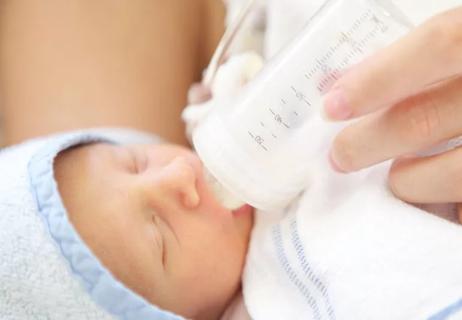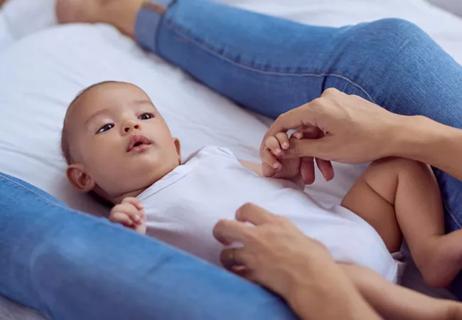Studies show that infant sleeping bags can reduce the risk of SIDS

One of the safest ways for babies to hit the sack is to … well, be in a sack.
Advertisement
Cleveland Clinic is a non-profit academic medical center. Advertising on our site helps support our mission. We do not endorse non-Cleveland Clinic products or services. Policy
Infant sleeping bags — also known as sleep sacks — are wearable blankets designed to keep your baby comfortably toasty during the night. As far as bedtime garments go, it’s pretty darn adorable.
But a sleep sack isn’t a mere fashion statement. View it more as a layer of protection. A 2019 analysis found that infant sleep sacks “are as safe, if not safer, than other bedding” when it comes to preventing sudden infant death syndrome (SIDS).
Why are sleep sacks so effective? Pediatrician Heidi Szugye, DO, IBCLC, offers an explanation.
A sleep sack is basically a way to safely keep your child warm while they sleep. It truly is designed as a wearable blanket, with tour baby’s torso, legs, feet and teeny-tiny toes housed within the sack.
The garment should be sleeveless, allowing those little arms and hands to move freely without any restrictions. (More on that in a moment.)
A zipper, or a series of snaps, typically runs up the front of a sleep sack, making it extremely easy to get your baby dressed for bed. Anyone who has fought to get little limbs into footie pajamas will appreciate the simplicity.
An added bonus? Sleep sacks also make it a breeze to get to dirty diapers.
Sleep sacks offer a safer sleeping environment for your baby in several ways, all of which should help you rest easier. Benefits of sleep sacks include:
Advertisement
Your baby probably received many soft, fluffy blankets as gifts. A word of advice, though: Don’t plan on your infant using them when they sleep. The American Academy of Pediatrics (AAP) recommends keeping loose bedding out of your baby’s crib until they’re at least 12 months old.
The reason? Blankets pose a suffocation and strangulation danger for infants if the blankets come loose and obstruct breathing. Sleep sacks, meanwhile, provide the warmth and comfort of a blanket without the risk.
“It’s best to save those blankets for when your kids are older,” advises Dr. Szugye. “If you really want to use them right away, take them out for a picnic or during tummy time when you’re supervising your child.”
There’s a safety reason behind most sleep sacks being sleeveless: “You really want to have your infant’s arms free, so if they do roll over onto their belly while in bed they can use their arms to roll themselves back,” explains Dr. Szugye.
The risk of suffocation and SIDS increases if a baby somehow ends up face down in bed. (Fast fact: Sleep sacks grew in popularity in the United States in the 1990s as part of an effort to reduce cases of SIDS.)
The bagginess of a sleep sack gives babies room to kick their legs, which is good for their hips. Wrapping or swaddling a baby too tightly, meanwhile, can cause a hip dislocation or hip dysplasia.
Swaddling a newborn is extremely common. The idea is to completely wrap your baby from the neck down (arms included) in a light blanket. The snug feeling is supposed to mimic the feeling of being in the uterus.
Done correctly and with adult monitoring while in use, swaddling can be an effective technique to calm infants and promote sleep, according to the AAP.
Concerns grow, however, when babies begin to roll over at around 8 weeks old.
If a swaddled baby flips onto their belly, their pinned arms make it much more difficult for them to roll back over. As mentioned above, that increases the risk of SIDS and accidental suffocation.
The AAP recommends closely monitoring swaddled babies in case they roll onto their bellies. And stop swaddling your child for sleep as soon as they show signs of trying to roll over.
Sleeveless sleep sacks, meanwhile, don’t generate the same level of suffocation worry. Given that, they make a safe “next step” once newborns are ready to transition out of a swaddle, notes Dr. Szugye.
Sleep sacks can also be used by newborns. Just make sure the sizing is correct so the fabric doesn’t go over their head. (It’s always best to check manufacturer sizing guidelines.)
Most babies can use a sleep sack until they’re about 2 years old. Size, however, is more of an issue than age. Larger sleep sacks can comfortably fit infants up to about 30 pounds and 40 inches tall.
Advertisement
By the time your baby has outgrown sleep sacks, they should be able to safely use a blanket.
To hear more from Dr. Szugye on this topic, listen to the Health Essentials Podcast episode, “Babies and Bedtime.” New episodes of the Health Essentials Podcast are available every Wednesday.
Advertisement
Learn more about our editorial process.
Advertisement

Your baby needs to able to roll in both directions before they can make the switch

Proven dangers of padded bumpers led to a 2022 ban

Share this list with anyone who cares for your baby

Answers to common questions parents of preemies have

Tips for easing the tight neck muscle that tilts the head

Type 2 diabetes isn’t inevitable with these dietary changes

Applying a hot or cold compress can help with pain